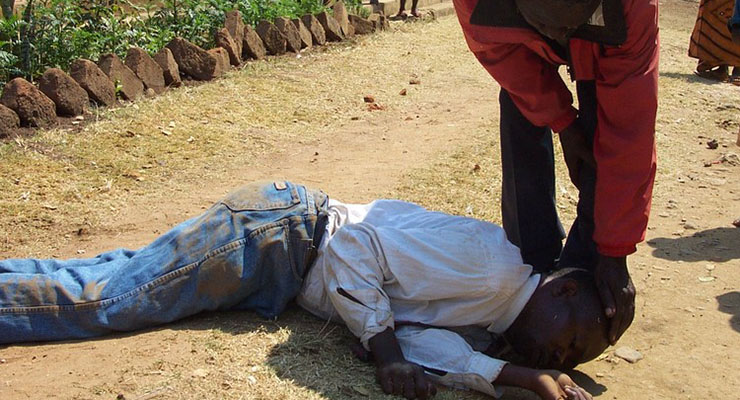
The Sunday Mail

Dr Christine Peta
According to the World Health Organisation, epilepsy is a group of chronic brain conditions which consist of repeated epileptic seizures, which represent signs and symptoms of brain disturbance. However, epilepsy is shrouded with controversy, with some people arguing that it is a disability and some saying that it is not, depending on the way in which disability is officially defined in each country’s statutes.
In the US, an impairment that is periodic can be regarded as a disability, if it greatly limits major life activities when it is active (EEOC). As a result, persons with epilepsy are regarded as persons with disability, because they are largely limited in neurological functions and other major life activities during the periods of time when seizures occur.
For example, persons with epilepsy are unable to speak or to interact with others when seizures happen, hence they are not capable of doing things that they would otherwise have been able to do had they not been affected. Whilst seizures may commonly last for less than five minutes, they often have a beginning (symptoms such as headache, dizziness, numbness and nausea), a middle (the “electrical” seizure activity in the brain) and an end (the recovery period which may occur immediately or which may take minutes to hours before the person is fully recovered).
Symptoms of an upcoming seizure may last for hours or several days and they may include headache, fatigue, depression and anxiety. Some self-control methods may help to prevent or decrease the intensity of the seizure and they include plainly telling the seizure “no”, walking or engaging in a task or sniffing a strong odour; there is no guarantee that these self-control methods will always work. Not all persons with epilepsy experience symptoms before the onset of a seizure but those who do may take their medical drugs, or take measures to prevent injuries. There is a one in ten chances that each person may have at least one epileptic seizure in his or her lifetime.
Nevertheless, active epilepsy is one that causes two or more unprovoked seizures on different days in the year before the assessment date.
Epilepsy seizures come in different shapes and sizes but during a seizure a person may lose awareness (blackout), they may be unable to move, or they may make chewing movements. The pupils of their eyes may appear to be larger than normal or the person my bite their tongue, they may struggle to speak or they may make jumbled sounds.
More than 10 million people in Africa have epilepsy, estimates in Zimbabwe indicate a prevalence rate of about half-a-million people.
A WHO report on epilepsy in the African region indicates that there are various causes of epilepsy among different age groups. For children aged between 0 to 10 years, epilepsy may be caused by among other things, malaria, HIV, cerebral defects, inborn errors of digestion and errors in arteries and veins that carry fluids such as blood. The same factors may cause epilepsy among persons aged between 10 to 60 years, with alcohol, drugs, brain tumours, diabetes and addiction to traditional and modern medicines adding to the list (WHO, 2004).
The way epilepsy is understood in Western countries is different from the way that it is understood among different communities in Africa. In Zimbabwe, epilepsy is often associated with ancestral or evil spirits, witchcraft and the breaking of traditional taboos. Stories like “I got epilepsy because of ‘ngozi’ (avenging spirit) of a school child who was beaten to death by my grandfather who was a school teacher” are told. Or “I got epilepsy because my father did not beat my grandmother’s grave properly so the spirit of my late grandmother got angry and caused me to have epilepsy. Or “I got epilepsy because my father’s sister brought her husband and lived with him in my father’s village, the husband died and was buried in my father’s village, instead of taking his dead body back to his own people for burial. In our African culture that is taboo, so now I have epilepsy.”
The traditional understanding of epilepsy within an African context results in affected persons and their families consulting traditional healers and religious prophets, ahead of modern health care centres. Research undertaken in Zimbabwe reveals that prescriptions offered for epilepsy differ and they include religious prophets directing a person with epilepsy to drink 20 litres of black tea, and to only stop when he or she has pneumonia or until he or she starts frothing in the mouth.
Traditional healers may prescribe the chewing of roots of some plants and they may also direct persons with epilepsy to stop eating meat for a period of time, which may be up to a full year. Some traditional healers direct persons with epilepsy to stop eating food that is cooked in the same pot as that of other family members, but to prepare their own food in a clay pot which is set aside specifically for the person with epilepsy. Some traditional healers direct affected persons to stop eating salted food for a period of up to six months and if the affected person is a man, he may be directed by the traditional healer to have coitus with a woman with disability, so as to rid himself of epilepsy.
The Epilepsy Support Foundation in Zimbabwe encourages persons with epilepsy to take modern epilepsy medication. Whilst such medication may have side effects, users have reported that the medical drugs reduce seizures.
Way forward
So what do we do when someone who has epilepsy experiences a seizure in the home, in the workplace, in the street, in the community or in any other place? Among other things, you should not panic and start putting objects in the person’s mouth or giving them food or drink.
You should stay calm and you should not try to stop the affected person’s movements or try to hold the person down as this may cause injuries such as dislocated shoulders.
The person should not be moved except in cases where he or she is in danger. Care should be taken to protect the person from injury by removing harmful objects that may be close by. Cushioning the person’s head, and checking if the person has a medical card on him or her, which gives information about seizures and what to do is important (Epilepsy Action, 2016).
Gauge the period of time that the jerking lasts, and do not leave the affected person alone until he or she is fully recovered. Call for an ambulance if the jerking continues for a long period of time such as more than five minutes or if the person is injured during the seizure, or if you believe that the person needs urgent medical attention. If a person who is having the seizure is sitting in a wheelchair, you should put the brakes on the wheelchair to stop the wheelchair from moving. Let the person sit in the wheelchair during the seizure, except in cases where they have a care plan which directs you to move them.
Moving the person can result in injuries for both the person who is being moved and the person who is moving the affected person. If the person has a seatbelt, leave it fastened so that the person does not fall. Epilepsy can happen to anyone at any time, we should not stigmatise those who have it, but we should support them in the best way possible.
Dr Christine Peta is a public health care practitioner who, among other qualifications, holds a PhD in Disability Studies. Be part of the international debate on how best to nurture a society which is more accessible, supportive and inclusive of disabled people. Partner with Disability Centre for Africa (DCFA) on [email protected]






